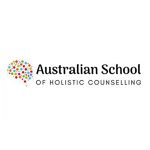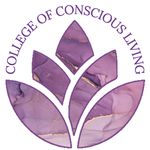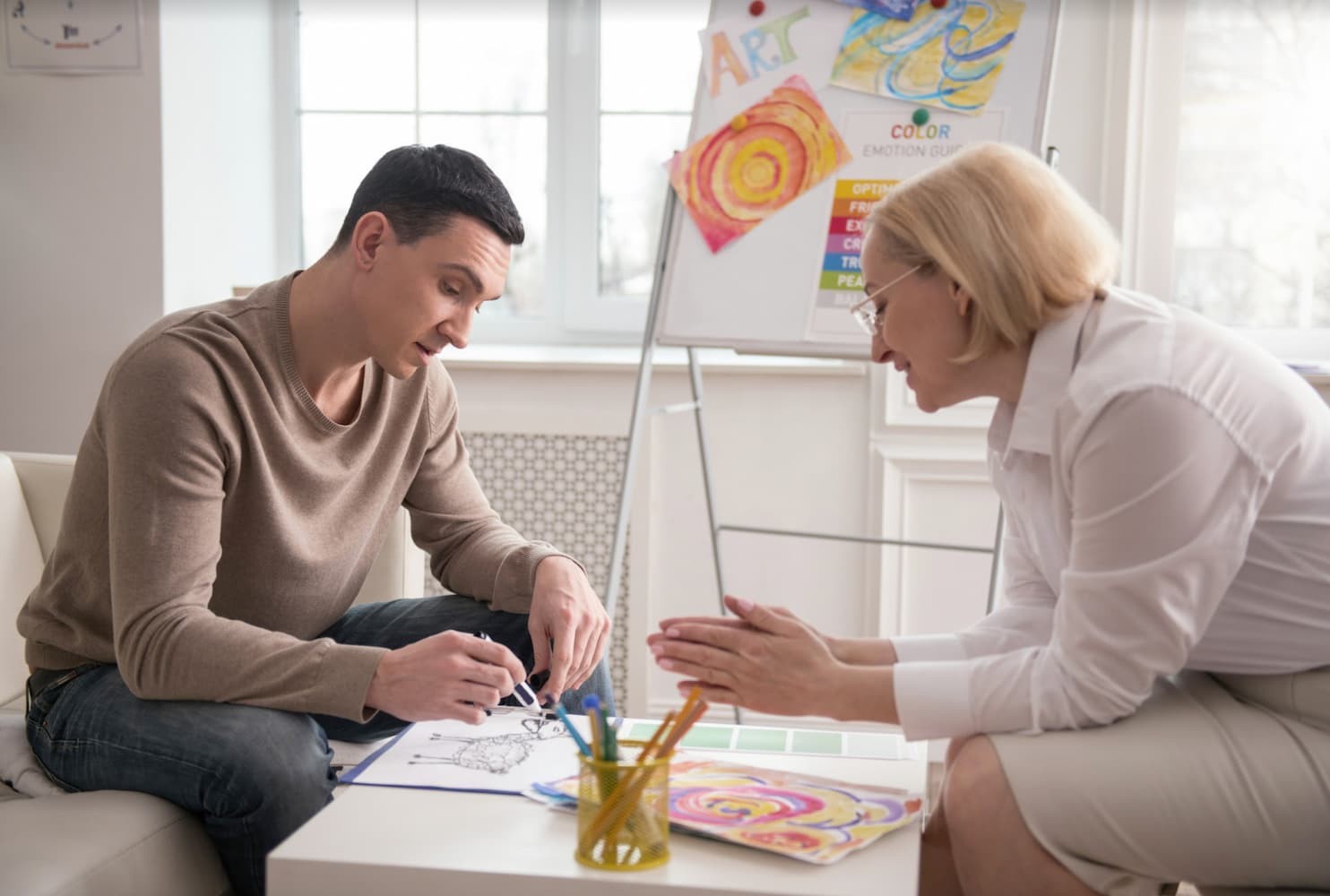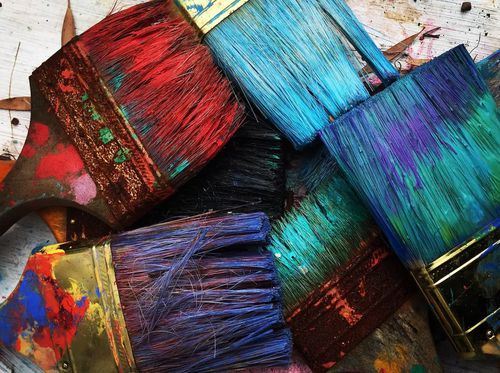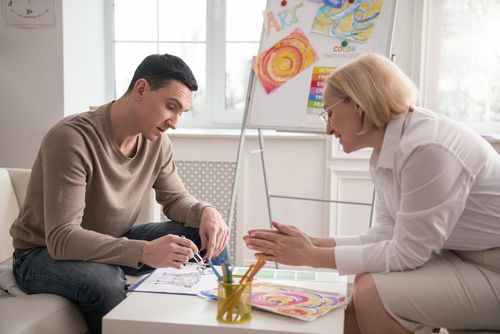What is art therapy?
Art therapy is an art-based process where an individual creates, views and analyses their artworks. Art therapists let their clients choose their own art tools and give them the freedom to create artworks that represent their thoughts and feelings. The purpose of art therapy is to empower clients and give them greater control over their mind, body and spirit. Additionally, it facilitates communication, self-awareness, self-expression and personal growth. Art therapists are responsible for assisting people who are experiencing:
- Anxiety
- Grief
- Stress
- Fears and phobias
- Muscle tension
- Dementia
- High blood pressure
- Some types of cancer
- Substance abuse
- Depression
- Eating disorders
- Family or relationship problems
- Post-traumatic stress disorder (PTSD)
In Melbourne, some of the professional membership associations that art therapists have the opportunity to join include:
- Australian, New Zealand and Asian Creative Arts Therapies Association (ANZACATA)
- Professional Association for Arts Therapy in Australia and New Zealand (ANZATA)
- Australian Association of Social Workers (AASW)
- Australian Clinical Psychology Association (ACPA)
- Australian Community Counselling Association (ACCA)
- Australian Counselling Association (ACA)
- Australian Counselling
- Australian Psychological Society (APS)
- Australian Register of Counsellors and Psychotherapists (ARCAP)
- Psychotherapy and Counselling Federation of Australia (PACFA)
Should you study art therapy?
Do you want to help people to achieve a better quality of life and improve their mental health through creative means? If you answered yes, then art therapy is the perfect career path for you. Some of the interpersonal skills that potential employers look for when hiring art therapists are:
- Strong verbal and non-verbal communication skills in order to guide clients in using art for therapeutic purposes.
- Working knowledge of art tools and ability as well as an interest in human behaviour.
- High levels of creativity and strong problem-solving skills in order to be able to interpret the artworks and their clients through looking at the colours, patterns and symbols used and drawing relationships between their thoughts and feelings.
- Caring demeanour who is interested in the health and welfare of their clients.
If this matches your career goals and soft skills, continue reading to discover your course and study options in Melbourne that will allow you to begin your journey as an art therapist.
What are the course and study options for art therapists in Melbourne?
In order to become a registered art therapist in Melbourne, you must complete an undergraduate degree either in counselling, psychology, social science or another related field. Following that, you will need to complete a postgraduate qualification degree in art therapy. Many art therapy schools in Melbourne offer a variety of learning methods courses on-campus, online or through a blended delivery system.
These courses are taught by highly trained art therapists who have an in-depth understanding of the theory, history and techniques of art therapy. During these courses, you will be introduced to the therapeutic techniques used by art therapists, as well as creative exploration through the means of art. Using this, you will be able to assist people going through emotional distress, psychological or physical problems. You are also required to complete 750 hours of work experience in a clinical placement when completing your Master's degree.
This page will provide you with a list of art therapy schools and course options in the city of Melbourne. You can contact the specific art therapy institutions if you would like further information about their entry requirements, study options or payment plans.
What happens after you complete your art therapy course?
It is vital that after you finish your undergraduate and postgraduate degrees that you register with the professional membership body, Australian, New Zealand and Asian Creative Arts Therapies Association (ANZACATA) before you can become a qualified art therapist.
Art therapists are able to work in a variety of different workplace environments. Some of these include hospitals, schools, community health, rehabilitation centres, crisis centres, mental health facilities, domestic violence shelters, assisted living facilities and homeless shelters. In addition, regardless of where you decide to work, you will need to complete additional professional development hours as part of the Continuing Professional Education program.
You also have the opportunity to start your own private practice specialising in art therapy. By being self-employed it allows you to retain greater autonomy over your work and management of your business. Additionally, Natural Therapy Pages will allow you to list your in-person art therapy services through the online practitioner listing page. You are also able to list your online art therapy sessions if you are looking for greater flexibility in your workday.

